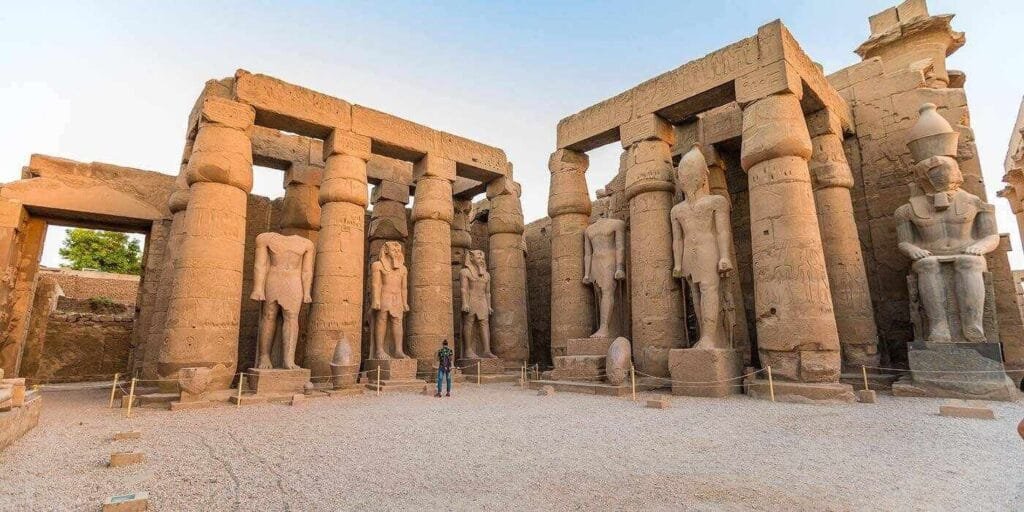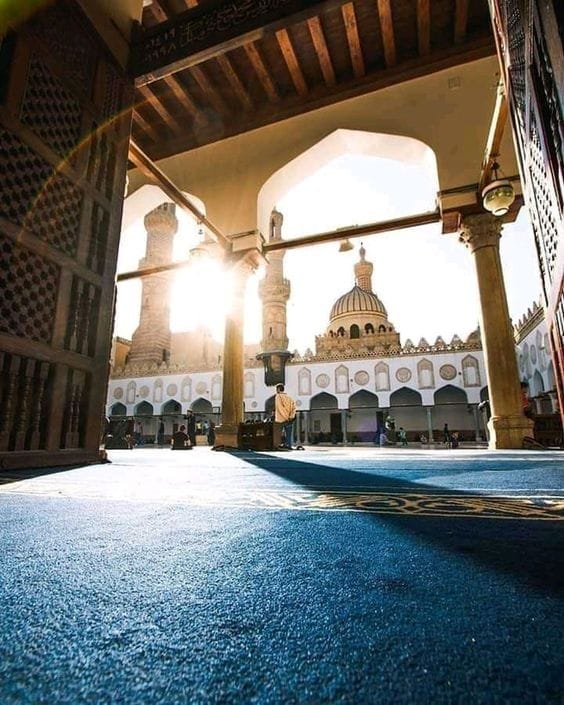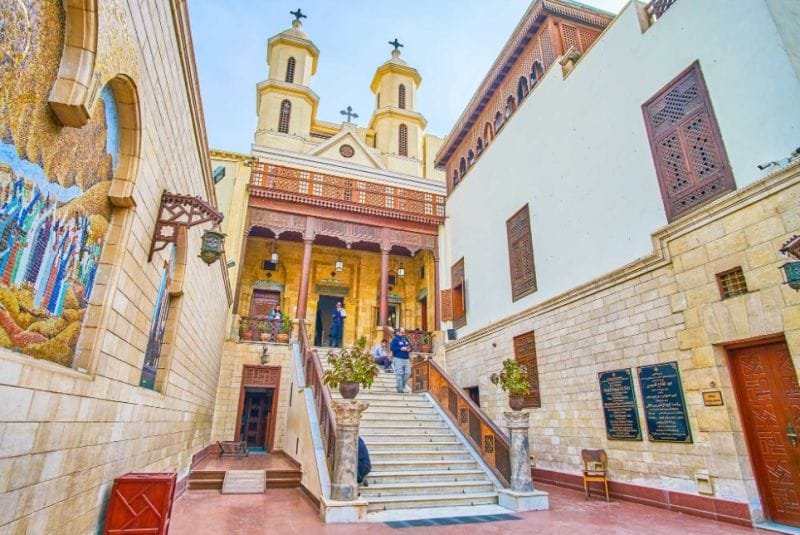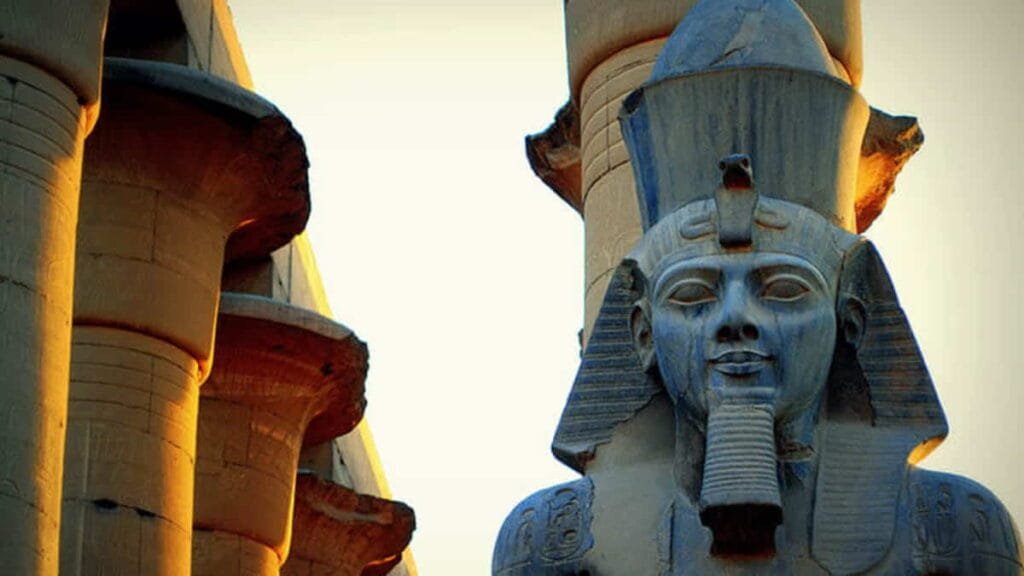Egypt’s architectural legacy is both ancient and modern, weaving together timeless monuments with contemporary developments. From the grand structures of the pharaohs to the bustling streets of modern Cairo, Egypt’s architecture is a testament to its rich history and dynamic cultural evolution. Exploring Egypt’s unique architecture offers travelers a glimpse into the civilization’s advancements and its ongoing efforts to blend the past with the present. Here’s what you can expect from Egypt’s architectural marvels.
- Egypt Tour Magic
- Egypt Tour Packages
- Excursions in Egypt
- Cairo Tours and Excursions
- Hurghada Tours and Excursions
- Soma Bay Tours and Excursions
- Makadi Bay Tours and Excursions
- Sahl Hasheesh Tours and Excursions
- El Gouna Tours and Excursions
- Marsa Alam Tours and Excursions
- Port Ghalib Tours and Excursions
- El Quseir Tours and Excursions
- Dendera and Abydos Day Tours
- Aswan Tours and Excursions
- Luxor Tours and Excursions
- Alexandria Tours and Excursions
- Sharm El Sheikh Tours and Excursions
- Top Rated Tours in 2025
- Optional Excursions in Egypt
- Private Transfer
- Blogs About egypt
- Ancient Egypt
- What You Need To know Before Your First Trip To Egypt
- Best Places to Visit in Egypt 2025
- Top Attractions in Red Sea Resorts 2025
- Top 10 Tourist Activities in Egypt
- Top 30 Activities You Can’t Miss in Egypt
- The Guide to Guided Tours in Egypt
- Egypt’s Ancient and Modern History
- The Nile River
- The Deserts of Egypt
- Historical Sites in Egypt
- Cairo
- Alexandria
- Luxor
- Aswan
- The Red Sea
- Dendera Temple
- El Fayoum Oasis
- Bahariya Oasis
- Siwa Oasis
- Al Alamein
- Marsa Matruh
- Ancient Egyptian gods
- famous Egyptian dishes
- UNESCO World Heritage sites
- About Us
- Why Egypt Tour Magic
- Egypt Tour Magic
- Egypt Tour Packages
- Excursions in Egypt
- Cairo Tours and Excursions
- Hurghada Tours and Excursions
- Soma Bay Tours and Excursions
- Makadi Bay Tours and Excursions
- Sahl Hasheesh Tours and Excursions
- El Gouna Tours and Excursions
- Marsa Alam Tours and Excursions
- Port Ghalib Tours and Excursions
- El Quseir Tours and Excursions
- Dendera and Abydos Day Tours
- Aswan Tours and Excursions
- Luxor Tours and Excursions
- Alexandria Tours and Excursions
- Sharm El Sheikh Tours and Excursions
- Top Rated Tours in 2025
- Optional Excursions in Egypt
- Private Transfer
- Blogs About egypt
- Ancient Egypt
- What You Need To know Before Your First Trip To Egypt
- Best Places to Visit in Egypt 2025
- Top Attractions in Red Sea Resorts 2025
- Top 10 Tourist Activities in Egypt
- Top 30 Activities You Can’t Miss in Egypt
- The Guide to Guided Tours in Egypt
- Egypt’s Ancient and Modern History
- The Nile River
- The Deserts of Egypt
- Historical Sites in Egypt
- Cairo
- Alexandria
- Luxor
- Aswan
- The Red Sea
- Dendera Temple
- El Fayoum Oasis
- Bahariya Oasis
- Siwa Oasis
- Al Alamein
- Marsa Matruh
- Ancient Egyptian gods
- famous Egyptian dishes
- UNESCO World Heritage sites
- About Us
- Why Egypt Tour Magic
What to Expect from Egypt’s Unique Architecture: A Journey Through Time and Design

1. Ancient Egyptian Architecture: Monumental and Timeless
Ancient Egyptian architecture stands as a symbol of the country’s grandeur and ingenuity. The most iconic of Egypt’s architectural feats are the pyramids of Giza, particularly the Great Pyramid, built during the Fourth Dynasty of the Old Kingdom around 2580-2560 BC. The construction of these massive structures required an unparalleled understanding of engineering and mathematics. The Great Pyramid, once the tallest man-made structure in the world, was built with over 2 million limestone blocks, each weighing several tons. Its precision, alignment with the stars, and intricate internal chambers demonstrate the Egyptians' advanced skills in architecture and astronomy. The pyramids were built as tombs for the pharaohs, meant to ensure their journey into the afterlife. Similarly, temples such as the Temple of Karnak and the Temple of Abu Simbel reflect the grandeur of Egypt’s religious practices. The columns, obelisks, and statues in these structures served not only as architectural features but also as symbolic representations of the divine power of the gods and pharaohs. Temples were designed to honor the gods and ensure the spiritual connection between the earth and the divine. The construction techniques used in these structures—utilizing massive stone blocks, elaborate carvings, and precise alignments—reveal a society deeply concerned with eternity, spiritual reverence, and technological mastery. Visiting these structures today allows us to marvel at the vastness of the ancient Egyptian civilization and the monumental scale of their architecture, which still continues to inspire awe and fascination.

2. Islamic Cairo: A Fusion of Elegance and Functionality
The architecture of Islamic Cairo offers a beautiful blend of practical design and intricate beauty, reflecting Egypt’s Islamic heritage. The heart of Cairo’s Islamic district is a living museum of medieval mosques, madrasas (Islamic schools), and historic palaces. These structures, built during the Islamic Golden Age, exhibit the fusion of local traditions with influences from Persia, Central Asia, and the broader Islamic world. One of the most famous examples of Islamic Cairo is the Al-Azhar Mosque, which is not only a place of worship but also home to the Al-Azhar University, one of the oldest institutions of higher learning in the world. The mosque’s architecture exemplifies a harmonious blend of Islamic design elements such as delicate arches, large domes, intricate geometric patterns, and expansive courtyards. The Mamluk era, in particular, contributed significantly to the architectural richness of the city, with structures like the Sultan Hassan Mosque showcasing colossal, ornate designs. The mosque’s grandeur is reflected in its vast prayer hall, monumental columns, and intricate stonework. The Mohamed Ali Mosque, situated within the Citadel of Saladin, is another iconic example of Islamic Cairo's elegance. Its large central dome and towering minarets are visible from nearly every part of Cairo, standing as a beacon of Cairo’s Islamic history. Islamic Cairo is also home to beautiful madrasas and monuments like the Al-Rifa’i Mosque and The Mosque of Ibn Tulun, each showcasing a different aspect of Islamic architecture, from the simplicity of Abbasid-era structures to the ornate Mamluk designs. The Islamic district offers a peaceful blend of beauty and functionality, with courtyards and fountains designed to cool the air, providing comfort in the hot Cairo climate while also creating serene, awe-inspiring spaces for worship.

3. Coptic Architecture: Tranquil and Sacred Spaces
Coptic architecture in Egypt provides a glimpse into the rich history of Christianity in the region, with many buildings reflecting the peaceful simplicity and spiritual serenity of the Coptic faith. The Coptic Orthodox Church is one of the oldest Christian communities in the world, and its architectural legacy in Egypt is marked by understated yet profoundly symbolic designs. One of the most iconic examples of Coptic architecture is the Hanging Church (Saint Virgin Mary’s Coptic Orthodox Church), which is perched above the Roman Babylon Fortress in the heart of Old Cairo. This church is one of the oldest in Egypt, with a history dating back to the 3rd century, and its name comes from its elevated position. The church features a wooden ceiling with intricate carvings and beautifully designed icons that are central to Coptic worship. The simplicity of the architecture emphasizes tranquility and reflection, with high vaulted ceilings and natural light streaming in through narrow windows, creating an atmosphere of peaceful devotion. Another stunning example is the Monastery of Saint Antony, located in the Eastern Desert. This remote monastic complex is one of the oldest in Egypt, built during the 4th century. Its modest design, including stone walls and simple structures, blends seamlessly into the desert landscape, creating a sense of isolation and connection to the divine. Coptic churches and monasteries are often characterized by their wooden doors, painted murals, and small chapels. The emphasis is on creating sacred spaces where worshippers can connect with their faith, offering visitors a quiet place for reflection and contemplation. Coptic architecture represents an enduring connection to Egypt’s religious history and offers a unique architectural experience for travelers.

4. Modern Egyptian Architecture: A Blend of Tradition and Innovation
Modern Egyptian architecture is a vibrant fusion of the country’s ancient heritage and contemporary design, with many buildings integrating traditional elements into sleek, modern structures. Cairo, Egypt’s bustling capital, is a city where historical buildings sit alongside newly constructed skyscrapers, creating a fascinating contrast. The Cairo Opera House, for instance, is a modern landmark in the city that reflects a blend of European architectural influences with traditional Egyptian elements. Designed with a striking, contemporary flair, the Opera House is an architectural marvel that has become a cultural hub in Cairo. Another example of Egypt’s modern architecture is the Bibliotheca Alexandrina, a contemporary library built to honor the ancient Library of Alexandria. Designed by Norwegian architect Snohetta, the library is a masterpiece of modern design, featuring a slanted, circular roof adorned with inscriptions that echo the ancient symbols of Egypt’s past. The library's exterior is made of glass and granite, creating a striking visual contrast with the traditional stone buildings that line the streets of Alexandria. Additionally, Egypt is home to large-scale modern developments like the New Administrative Capital, a futuristic city being constructed to ease congestion in Cairo. This ambitious project includes high-rise buildings, smart infrastructure, and vast green spaces, designed to blend technology, sustainability, and modern design. These buildings incorporate innovative materials and cutting-edge architectural techniques, while also respecting Egypt’s architectural heritage by using classical forms and motifs. Modern Egyptian architecture is constantly evolving, and it’s a reflection of the country’s ongoing development and forward-thinking vision.

5. Pharaonic Revival and Neo-Egyptian Architecture
Pharaonic revival, or Neo-Egyptian architecture, became particularly prominent in the 19th and early 20th centuries as Egypt experienced a renewed interest in its ancient past. Architects began to incorporate Egyptian motifs, such as obelisks, columns, and hieroglyphic inscriptions, into modern buildings, symbolizing Egypt’s cultural pride and grandeur. One of the most famous examples of Neo-Egyptian architecture is the Egyptian Museum in Cairo, which showcases both neoclassical design and distinctly Egyptian influences. Built in the early 20th century, the museum’s structure includes large columns, intricate carvings, and monumental statues that evoke the grandeur of ancient Egypt. The museum’s design reflects the nation’s effort to link its modern identity with its glorious past. Similarly, the Cairo Railway Station built during the same period is another iconic example, featuring grand arches, columns, and sculptures that echo the imagery of ancient Egypt. The Neo-Egyptian style was particularly popular in public buildings and monuments, as it emphasized Egypt’s ancient heritage while incorporating modern construction techniques. Even though this style was a product of the 19th century, it left a lasting imprint on Egypt’s urban landscape. The influence of ancient Egypt’s design can still be seen today in many monuments, memorials, and public spaces that continue to evoke the power and beauty of the pharaonic era.

6. Nile Riverfront Architecture: A Scenic View
The Nile River is an essential part of Egypt’s history and geography, and its presence has influenced the architectural design of buildings along its banks. In cities like Cairo, Luxor, and Aswan, the Nile River serves as both a cultural and aesthetic focal point, with many hotels, restaurants, and landmarks strategically positioned to take advantage of the river’s serene beauty. In Cairo, the Cairo Marriott Hotel, originally constructed as a palace in the late 19th century, is one of the best examples of Nile Riverfront architecture. The hotel combines classic European design with Egyptian influences, offering stunning views of the Nile and the city’s skyline. Many buildings along the riverfront have been designed with wide terraces, open-air balconies, and large windows that allow guests to enjoy the panoramic view of the river and its banks. In Luxor, the Winter Palace Hotel is another prime example of riverfront architecture. Built during the colonial era, it boasts colonial-style architecture with an Egyptian twist, sitting right by the banks of the Nile. The views of the river from this historic hotel are spectacular, especially during sunrise and sunset. Architecture along the Nile focuses on integrating the natural beauty of the river into the design of the buildings, creating spaces that harmonize with the surrounding environment. Whether it's luxury hotels or simple restaurants, buildings along the Nile offer visitors a chance to experience the majestic river in all its glory while enjoying modern comforts.


